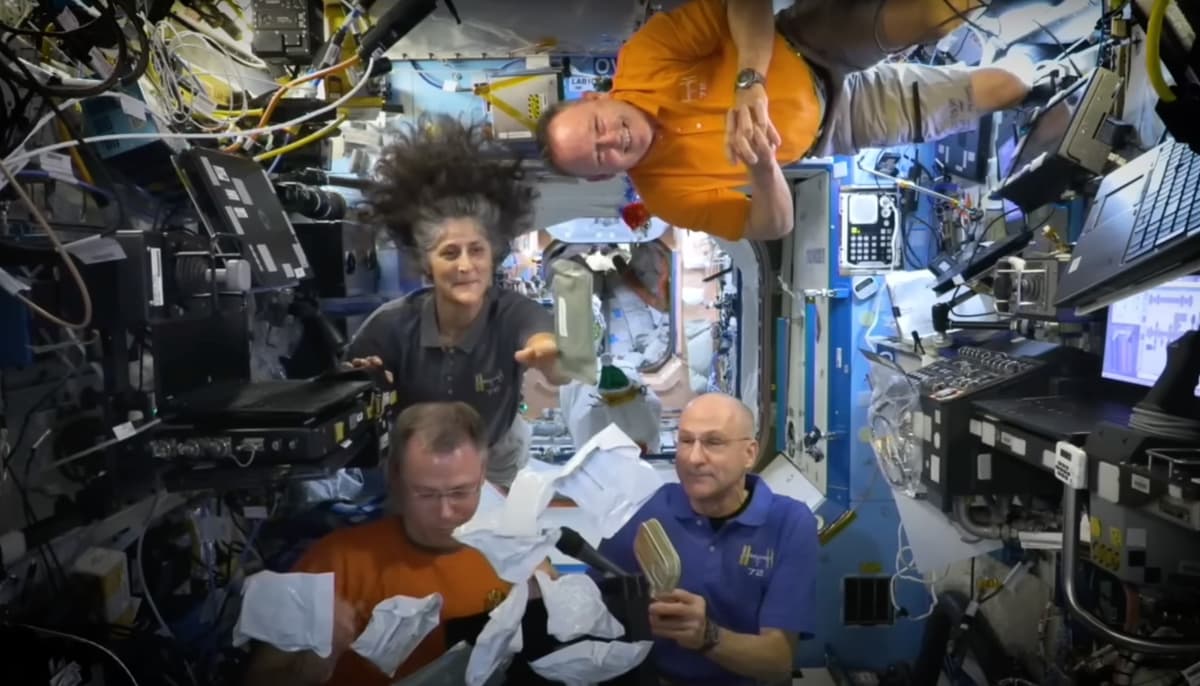A Growing Dent in Earth’s Skies Is Threatening Our Satellites
Recent observations show the region expanding westward and also splitting in two.

There’s a pothole in space. Instead of puncturing the tires of a car, this one can hit low-orbit satellites and spacecraft and knock them out of function.
Stretching over South America and the southern Atlantic Ocean, the South Atlantic Anomaly is a dent in Earth’s magnetic field, allowing particles from the Sun to penetrate closer to the planet.
Scientists have known about this phenomenon since the 1950s, when they began mapping Earth’s radiation belts. Yet some are now sounding the alarm bells as recent observations show the region expanding westward and also splitting in two, raising more challenges for satellite missions.
The radiation of high-energy protons in the South Atlantic Anomaly can cause a satellite, such as the International Space Station, to short-circuit and glitch, leaving permanent damage if a critical instrument is hit, according to NASA. To minimize risk, operators will often shut down non-essential components as they pass through the anomaly.
“The ISS occasionally passes through the SAA, and, fortunately, it was designed to protect astronauts inside from those higher levels of radiation,” the deputy director of the Aerospace Security Project and a senior fellow in the Defense and Security Department at the Center for Strategic and International Studies, Clayton Swope, tells The New York Sun. “But it wouldn’t be the best idea to do a spacewalk then.”
While the astronauts inside are protected, key objectives of the ISS might not be. Higher radiation levels in the anomaly can cause “blips” in the ISS’s data collection, resetting instruments such as the Global Ecosystem Dynamics Investigation Mission, which collect information from outside of the ISS.
“The detector blips are rare compared to the number of laser shots — about one blip in a million shots — and the reset line event causes a couple of hours of lost data, but it only happens every month or so,” the mission’s deputy principal investigator and instrument scientist, Bryan Blair, said in 2020.
However, Mr. Swope points out that “not all satellites have had enough radiation shielding to protect them. There are several examples of glitches and malfunctions of spacecraft electronics after passing through the SAA.”
Where did this pothole come from? Earth’s magnetic field is widely understood by researchers to be electrical currents produced by an ocean of molten iron in the planet’s outer core, more than 1,850 miles below the surface. This swirling mass does not flow evenly, resulting in a sprawling reservoir of dense rock called the African Large Low Shear Velocity Province, located about 1,800 miles below the African continent.
That reservoir is understood to be weakening Earth’s magnetic field in the region above ground, producing the South Atlantic Anomaly.
Some have said the phenomenon is a precursor to a global magnetic reversal, where the Earth’s north and south magnetic poles swap places. Several hundred of these flips have taken place in the planet’s history, on average a few times every million years. A reversal today would weaken the shielding effect of Earth’s magnetic field, enabling more charged particles to reach Earth and likely upending the world’s electronic infrastructure.
Yet in 2020, a study from researchers at the University of Liverpool in the UK found that the event is a recurrent magnetic phenomenon that has affected Earth since as far back as 11 million years ago. First author and palaeomagnetism researcher Yael Engbers said “the anomaly in the magnetic field in the South Atlantic is not a one-off, similar anomalies existed eight to 11 million years ago.”
A study published in February found that the South Atlantic Anomaly also has an impact on auroras seen from Earth.
Given the many unknowns surrounding this vast space oddity, NASA is tracking it closely.
“Looking to the future, satellite and crewed spacecraft designers and operators will need to keep an eye on the SAA,” Mr. Swope says. “It is drifting westward and changing shape, potentially exposing more satellites and spacecraft to higher radiation.”

